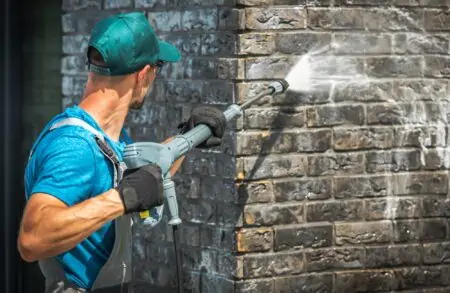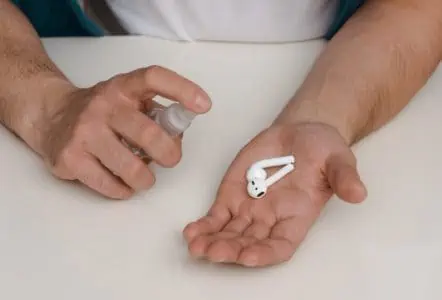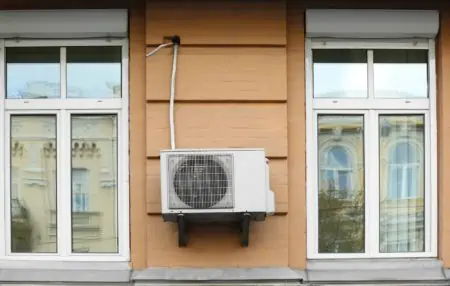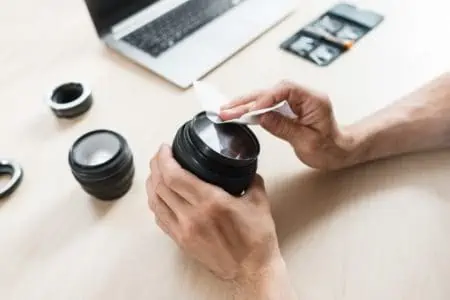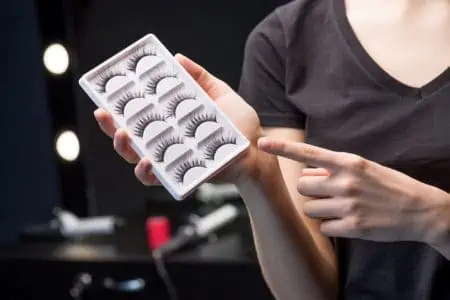Brick is a gorgeous, timeless building material that can complete a home. But it can become filthy, whether you have a brick house, fireplace, or exposed brick in your bedroom.
We’ve researched the best methods for cleaning brick, so it goes from stained to spotless.
Keep reading for our step-by-step method for how to clean brick and remove mold.
Key Takeaways
- Vacuum brick surfaces with a soft brush attachment to remove dirt and debris.
- Dampen bricks with water before applying a cleaning solution, such as a 1:1 mixture of distilled white vinegar and water.
- Scrub the brick with a nylon-bristled brush or masonry sponge, then rinse with water and wipe with a cloth.
- For exterior brick, use a pressure washer or hose to deep clean without harsh chemicals.
How Often to Clean Brick
For outdoor brick, such as that used for your house’s facade, you should clean it once a year.
For indoor brick around your fireplace, we recommend cleaning it every three uses.
You should dust indoor exposed brick walls as part of your weekly or monthly cleaning routine. Issue a wet cleaning of the walls twice a year or whenever you notice stains.
What is the Best Brick Cleaner?
When cleaning brick, we want to mostly avoid harsh chemicals as they can discolor and wear down the brick. Instead, we’re going to try utilizing the power of natural cleaners. You have a few options:
- Vinegar: Mix equal parts water and distilled white vinegar in a spray bottle. This is best for smaller areas, such as a fireplace.
- Soap and salt: Mix equal parts of dish soap and table salt to create a paste. You can also replace the salt with baking soda, which might be cheaper if you’re cleaning large areas.
- Water and cream of tartar: Mix two tablespoons of cream or tartar per three tablespoons of water. Stir to make a paste. You can apply this directly to the brick.
- Boric acid and water: Combine one tablespoon of boric acid per gallon of warm water. This is suitable for indoor and outdoor brick, but we don’t recommend it for old brick.
- Bleach: For exterior brick that is stubbornly stained, bleach can help. It’s not something we want to use often, but it can help remove mold and mildew. Mix one cup of bleach per gallon of water.
- Trisodium phosphate (TSP): Sometimes, a natural cleaner isn’t potent enough, and we have to call in the big guns. TSP is powerful but will clean stained and discolored brick — even indoors. Mix one gallon of water per ⅛ cup of TSP.
- Pressure washer or hose: If you’re wondering how to clean a brick house with these cleaners, you’re probably a bit overwhelmed. Applying a thin layer of cream of tartar paste to your whole house would take forever. Instead, you can use a pressure washer or hose, which will deep clean without harsh chemicals.
Protect Yourself
When using harsh chemicals, like bleach or TSP, or a power tool, stay protected. Wear gloves, a mask, and goggles, and work in a well-ventilated area.
How to Clean Interior Brick
Cleaning interior brick is different from exterior brick. Let’s start with cleaning the brick inside your home, such as around your fireplace or in the kitchen.
- Time: 20 minutes per area.
- Difficulty: Easy.
What You’ll Need
- Vacuum with a brush attachment.
- Brick cleaner of choice (such as a water-with-vinegar mixture).
- Spray bottle with water.
- Soft cloths.
- Nylon-bristled brush or masonry sponge.
1. Vacuum
Start by vacuuming the brick using a soft brush attachment. This will remove dirt, soot, and other debris.
2. Prepare Cleaner
Use one of our brick cleaners as suggested. Prepare it in a bowl or spray bottle — whatever is easiest for you. If using bleach or TSP, wear protective gloves, goggles, and a respirator.
3. Dampen the Bricks
Use your spray bottle with water to spritz the bricks. We want to dampen them first to ensure they don’t absorb too much cleaning solution.
You should also work in a small area at a time so that the cleaner doesn’t dry into the brick before you get a chance to rinse it off.
4. Apply Your Cleaner
Dampen a cloth or sponge in the cleaning solution of your choice. Start from the top of your brick section and work your way down. Spend extra time in grimy areas.
For really filthy spots, use a nylon-bristled brush or masonry sponge to scrub the area well. This will help to remove stubborn stains and dirt.
5. Rinse the Bricks
Spray the area with water again to rinse off the cleaning solution. Wipe up with a cloth, so the water and cleaner don’t trickle down. Continue until the bricks are free of cleaning solution.
Let the bricks air dry.
How to Clean Exterior Brick
For small sections, you can use the above method for cleaning bricks outside. But if you are cleaning your entire house or a large patio — we have a better method for you.
Warning
Do not pressure wash a house with old or damaged brick. This can be detrimental to the building structure. Don’t use a pressure washer on painted brick. Instead, wash with a garden hose.
- Time: 10 minutes per section.
- Difficulty: Intermediate.
What You’ll Need
- Pressure washer under 1000 PSI or garden hose.
- Waterproof tarp.
- Plastic sheeting.
- Tape.
- Protective gear, if pressure washing.
- Pressure washing detergent (optional).
1. Prepare Yourself and the Area
Cover plants and shrubs with a waterproof tarp to avoid damaging your garden. Cover windows and doors with plastic sheeting and tape. Make sure you wear protective gear, such as sturdy clothing, gloves, and goggles.
2. Add Detergent (Optional)
If your pressure washer has a detergent tank, add detergent to it. Make sure it’s safe for brickwork. We recommend Sun Joe All-Purpose Heavy Duty cleaner.
3. Apply Detergent
Start by applying the detergent. Choose a small section to start with and work from top to bottom. Leave the detergent for a couple of minutes to break down stains and dirt.
4. Rinse Detergent
After a few minutes, rinse the detergent off using a low PSI. Many experts recommend something around 50 PSI — so you may want to use your garden hose for this.
5. Clean the Brick
You can use a higher PSI to blast the brick now. Something between 500 and 1000 is recommended.
However, if you only have a garden hose, this is fine, too. Work in small sections working from top to bottom. Spend extra areas in places with dirt and stains.
Repeat steps three to five on each area of the brick.
How to Get Rid of Mold On Brick
When you have moss, mold, or mildew on your exterior brick, you can clean it off with bleach. Be sure to wear rubber gloves, goggles, and a respirator.
- Time: 10 minutes per area.
- Difficulty: Intermediate.
What You’ll Need
- Bleach.
- Warm water.
- Bucket.
- Garden hose or pressure washer.
- Sponge.
- Nylon-bristled scrubbing brush.
1. Prepare the Area and the Cleaner
Before you start, ensure that the area is clear of children and pets. Cover your flowers and plants to prevent bleach from splashing onto them.
Mix one cup of bleach per gallon of warm water.
Stay Safe
Put on your goggles, rubber gloves, and respirator. Since you’ll be using bleach, you want to protect yourself.
2. Dampen the Brick
Use your garden hose to wet the brick. This prevents the porous brick from absorbing too much bleach.
3. Apply the Bleach
Soak a sponge in your bleach solution and apply it to a small section of the brick at a time. You don’t want the bleach to dry into the brick because it can cause damage or discoloration.
4. Scrub the Brick
Use your nylon-bristled brush to scrub one area at a time. Keep going to remove mold, mildew, and moss.
The bleach and bristles will work hard, so you shouldn’t need to apply too much elbow grease. But for old stains, some extra force might help.
5. Rinse the Bricks
Use your garden hose to rinse the bricks. If you have a warm water tap, that will help to break down the loosened mold and mildew.
Repeat the above steps in the next affected area.
6. A Final Rinse
Once you’ve tackled the mold and mildew, give the brick a final rinse to remove all bleach residue.
Brick Cleaning Tips
Let’s share some extra brick cleaning tips to help you achieve the best results:
- Vacuum regularly: Vacuum indoor brick regularly to minimize dust and debris. Use your vacuum cleaner with the soft brush attachment to avoid scratching the brick.
- Apply water before cleaner: No matter what type of cleaning solution you choose, apply water to the brick first. A light spritz is all you need. It helps to prevent the bricks from absorbing the cleaning solution.
- Choose the right brush: We recommend a nylon-bristled scrubbing brush or a masonry sponge — such as the 3M Commercial Sponge — to clean the bricks. These tools are soft and won’t damage the brickwork.
- Top to bottom: Clean bricks from top to bottom. That way, if dirty water falls down, you can clean it as you go.
- Rinse well: Always rinse the bricks well with warm water and a sponge. You don’t want the cleaning solution to dry into the brick, where it will be absorbed.
- Test the brick’s absorption: Spray the bricks with water using a spray bottle or garden hose. If the bricks darken immediately, it means that they’re very porous. In that case, you should clean a small area at a time. This allows you to avoid the bricks absorbing too much cleaning solution before you get a chance to rinse the area.
How Can I Make My Exterior Brick Look Better?
Brick is timeless, but only with the proper care. If you want to spruce up your outdoor brick, bringing back the classic appearance, then there are some things you can do (besides deep cleaning it, of course).
First of all, you could regrout the brick. Dust and debris can settle in the grout; even after cleaning, it can look damaged and tired. A fresh layer of grout can make all the difference.
Replace broken bricks. Sometimes these odd bricks that are cracked or damaged stand out enough to make your house look tired. Replacing these can make a world of difference.
You should also consider new landscaping. Maybe new bushes, flora, or trees can hide some imperfections and bring new life to the home.
Another idea is to focus on other features of the home. Perhaps you have window trim that you can paint, or maybe it’s time for a new front door. Make a statement with other features to distract from tired brick.
People also love painting their bricks. You can paint brick any color — we recently saw a home makeover where the brick was painted blue. It looked lovely.
If you don’t want to paint your brick, you can conceal it with new cladding. Timber and metal are popular ideas at the moment.
Last but not least, you could render your brick wall. This involves covering it in a cement-like material which can then be tinted to a color of your choice. While it’s expensive and involves hiring a professional, it’s an aesthetic option!
FAQs
Beautiful Brick
Our tips for how to clean brick have shown you the best methods for sprucing up both indoor and outdoor brick. Are you ready for a beautiful before and after?
You can clean with acid, vinegar, and other natural ingredients. You can also achieve brilliant results with the help of a pressure washer.
Always spray your brick with water before using a cleaning solution, and rinse well afterward. Never let a cleaning solution dry onto the brick. The brick will absorb the cleaners, which can cause damage over time.
